Abstract
High concentrations of the ciliate Epidinium Crawley are associated with damaged regions of fresh plant material undergoing digestion in the sheep rumen. This finding supports that postulate that sequestration in the rumen explains the low rate of passage of protozoa despite the high flow rate of liquid from the rumen. The maintenance of Epidinium in the rumen, despite their slow growth rate, is also explained.
Full text
PDF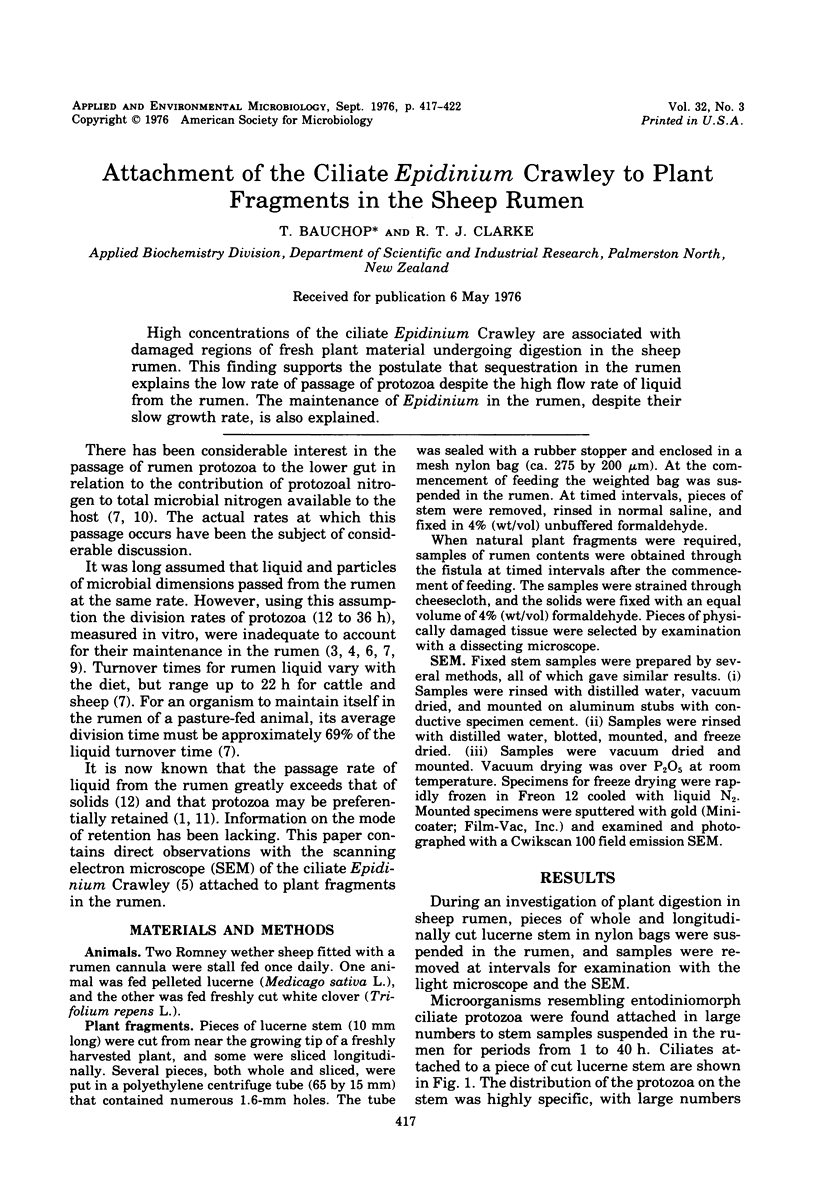
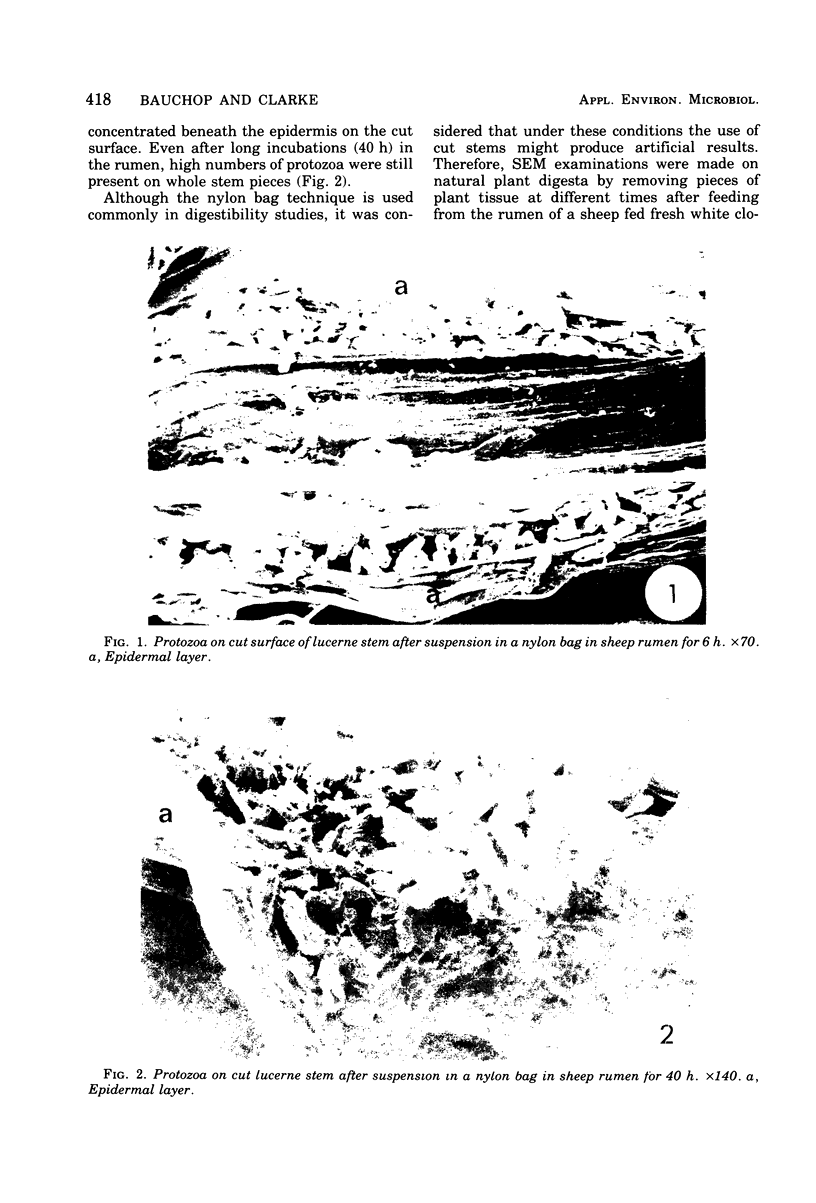
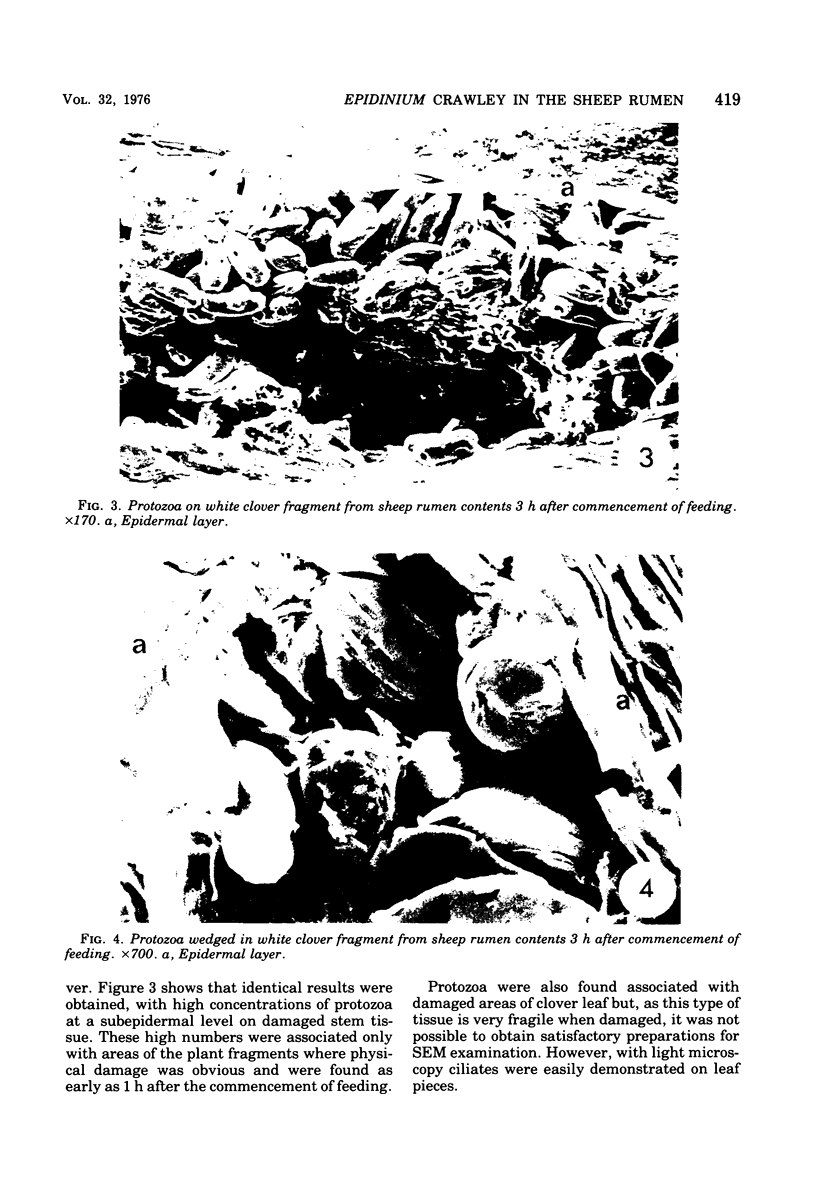
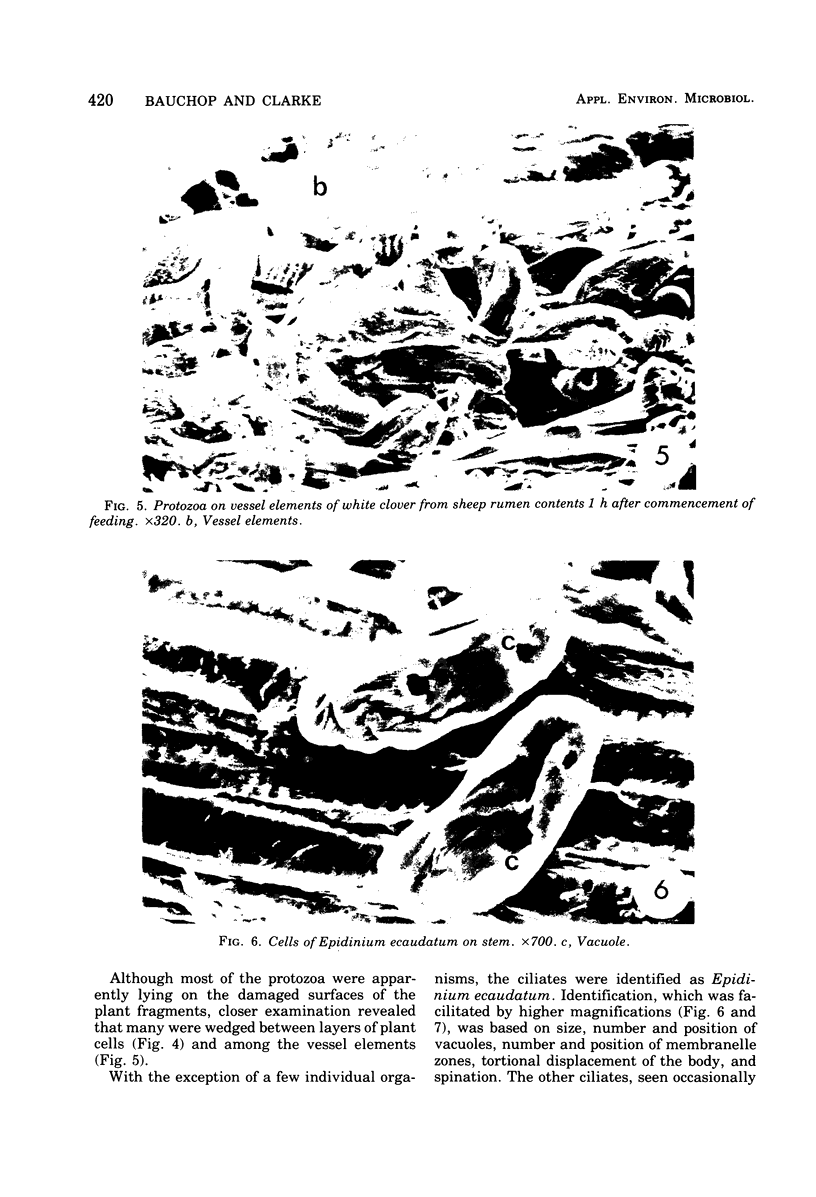
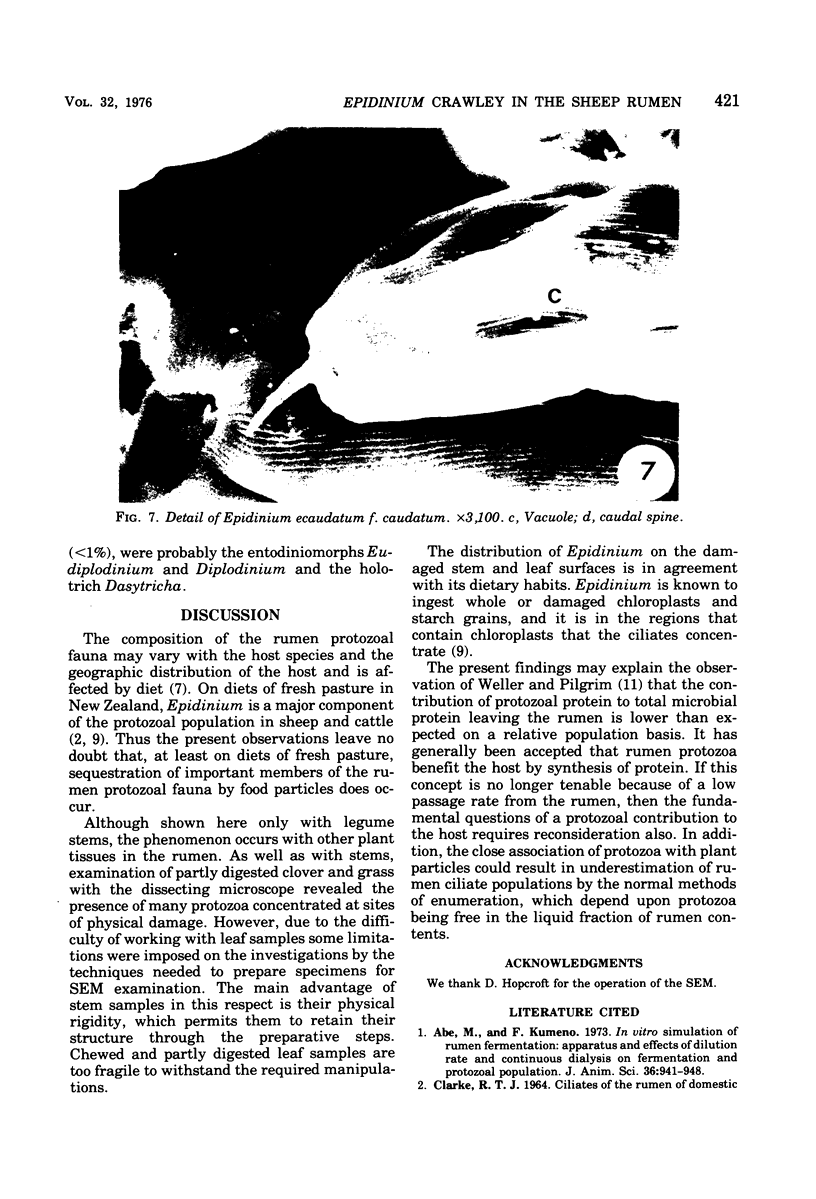

Images in this article
Selected References
These references are in PubMed. This may not be the complete list of references from this article.
- Abe M., Kumeno F. In vitro simulation of rumen fermentation: apparatus and effects of dilution rate and continuous dialysis on fermentation and protozoal population. J Anim Sci. 1973 May;36(5):941–948. doi: 10.2527/jas1973.365941x. [DOI] [PubMed] [Google Scholar]
- COLEMAN G. S. The cultivation of sheep rumen oligotrich protozoa in vitro. J Gen Microbiol. 1960 Apr;22:555–563. doi: 10.1099/00221287-22-2-555. [DOI] [PubMed] [Google Scholar]
- Clarke R. T., Hungate R. E. Culture of the rumen holotrich ciliate Dasytricha ruminantium schuberg. Appl Microbiol. 1966 May;14(3):340–345. doi: 10.1128/am.14.3.340-345.1966. [DOI] [PMC free article] [PubMed] [Google Scholar]
- GUTIERREZ J. Experiments on the culture and physiology of holotriches from the bovine rumen. Biochem J. 1955 Jul;60(3):516–522. doi: 10.1042/bj0600516. [DOI] [PMC free article] [PubMed] [Google Scholar]
- MAH R. A. FACTORS INFLUENCING THE IN VITRO CULTURE OF THE RUMEN CILIATE OPHRYOSCOLEX PURKYNEI STEIN. J Protozool. 1964 Nov;11:546–552. doi: 10.1111/j.1550-7408.1964.tb01796.x. [DOI] [PubMed] [Google Scholar]
- Pilgrim A. F., Weller R. A., Gray F. V., Belling C. B. Synthesis of microbial protein from ammonia in the sheep's rumen and the proportion of dietary nitrogen converted into microbial nitrogen. Br J Nutr. 1970 Jun;24(2):589–598. doi: 10.1079/bjn19700057. [DOI] [PubMed] [Google Scholar]
- Weller R. A., Pilgrim A. F., Gray F. V. Level of food intake and the passage of markers and nitrogen along the alimentary tract of sheep. Br J Nutr. 1971 Nov;26(3):487–497. doi: 10.1079/bjn19710054. [DOI] [PubMed] [Google Scholar]
- Weller R. A., Pilgrim A. F. Passage of protozoa and volatile fatty acids from the rumen of the sheep and from a continuous in vitro fermentation system. Br J Nutr. 1974 Sep;32(2):341–351. doi: 10.1079/bjn19740087. [DOI] [PubMed] [Google Scholar]









